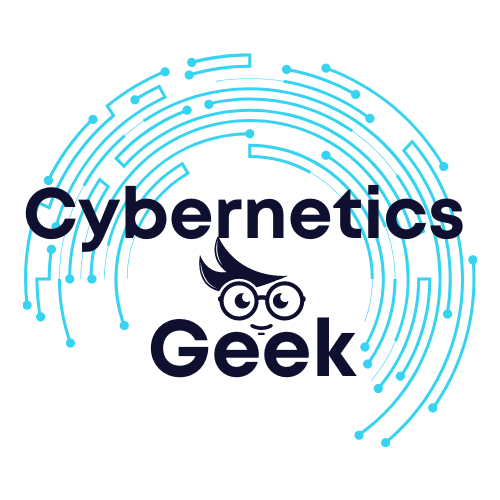In our digital-first world, cybersecurity is essential for protecting personal, professional, and organizational data. From major cyberattacks to emerging threats, understanding the basics of cybersecurity can help safeguard against potential risks. This guide covers foundational concepts, recent statistics, notable events, and actionable steps to secure your digital presence.
What is Cybersecurity?
Cybersecurity is the practice of protecting systems, networks, and data from cyber threats such as unauthorized access, malware, and data breaches. It combines technology, processes, and human awareness to ensure digital assets remain secure.
Key Principles of Cybersecurity
- Confidentiality: Keeping sensitive information private and accessible only to authorized individuals.
- Integrity: Ensuring information is accurate and hasn’t been tampered with.
- Availability: Making sure systems and data are accessible when needed.
Cybersecurity by the Numbers
- Cybercrime is projected to cost the world $10.5 trillion annually by 2025 (Cybersecurity Ventures).
- Data breaches increased by 156% globally in 2022, according to IBM’s Cost of a Data Breach report.
- 43% of cyberattacks target small businesses, yet only 14% are prepared (Accenture).
Why is Cybersecurity Important?
Cybersecurity is vital because it protects against threats that can have significant personal, financial, and societal impacts. Let’s explore why it matters:
1. Protection of Sensitive Data
Data breaches are becoming more frequent and costly:
- Facebook Data Breach (2021): Exposed the personal data of 533 million users.
- Equifax Breach (2017): Compromised sensitive information of 147 million people, costing over $1.4 billion.
2. Financial Loss Prevention
Cybercrime is expensive:
- The average cost of a ransomware attack for businesses in 2023 was $1.5 million (Sophos).
- Phishing attacks caused $2.7 billion in losses in the U.S. in 2022 (FBI Internet Crime Report).
3. National and Global Security
Cyber threats pose risks to critical infrastructure:
- Colonial Pipeline Ransomware Attack (2021): Disrupted fuel supplies in the U.S., causing panic and shortages.
- Ukraine Power Grid Attack (2015): Left 230,000 people without electricity, showcasing the potential for cyber warfare.
Common Cyber Threats
Understanding cyber threats is the first step in protecting against them. Here are some of the most prevalent threats today:
1. Malware
- Includes viruses, worms, ransomware, and spyware.
- Example: The WannaCry ransomware attack (2017) affected 200,000 systems globally, exploiting a Microsoft vulnerability.
2. Phishing
- Deceptive emails or messages trick users into revealing sensitive information.
- Stat: 88% of organizations worldwide experienced phishing attacks in 2022 (Proofpoint).
3. Social Engineering
- Manipulates human psychology to gain access to systems.
- Example: Hackers posing as IT support to trick employees into sharing login credentials.
4. Distributed Denial of Service (DDoS)
- Overwhelms a system with traffic, causing outages.
- Notable Event: The Amazon Web Services (AWS) DDoS attack (2020) disrupted services on one of the world’s largest cloud platforms.
Cybersecurity Basics for Beginners
Here are essential steps anyone can take to enhance their cybersecurity:
1. Create Strong Passwords
- Use passwords that are at least 12 characters long, with a mix of letters, numbers, and symbols.
- Stat: Weak passwords accounted for 81% of hacking-related breaches in 2022 (Verizon Data Breach Investigations Report).
2. Enable Multi-Factor Authentication (MFA)
- Adds an extra layer of protection to your accounts.
- Tip: Use authentication apps like Google Authenticator instead of SMS for better security.
3. Regularly Update Software
- Keep operating systems, applications, and antivirus programs updated to patch vulnerabilities.
4. Backup Your Data
- Use both cloud and offline backups to recover from ransomware or data loss incidents.
5. Avoid Suspicious Links
- Be cautious about clicking links in emails or messages, especially if unsolicited.
Emerging Trends in Cybersecurity
Cybersecurity is constantly evolving to address new challenges. Here are some trends shaping the future:
1. Zero Trust Security
- Assumes no one, whether inside or outside the organization, can be trusted without strict verification.
- Stat: By 2025, 70% of businesses are expected to adopt Zero Trust architectures (Gartner).
2. Artificial Intelligence (AI)
- AI tools analyze vast amounts of data to detect and mitigate threats in real time.
- Example: AI-driven systems like CrowdStrike Falcon detect anomalies faster than traditional methods.
3. Quantum Cryptography
- Quantum computing threatens to break existing encryption methods, pushing the development of quantum-safe algorithms.
Cybersecurity Events to Watch
1. New EU Cybersecurity Regulations (2024)
The EU’s NIS2 Directive introduces stricter security measures, requiring businesses to bolster their cybersecurity or face heavy fines.
2. Cybersecurity Awareness Month
October is recognized as Cybersecurity Awareness Month, with global campaigns aimed at educating individuals and businesses.
Resources to Learn Cybersecurity
If you’re ready to dive deeper, here are some resources:
- Certifications: Start with CompTIA Security+ or Certified Ethical Hacker (CEH).
- Online Courses: Platforms like Coursera, Udemy, and edX offer beginner-friendly programs.
- Books: Try Hacking: The Art of Exploitation or Cybersecurity for Dummies.
Conclusion
Cybersecurity isn’t just for IT professionals—it’s a fundamental skill for everyone in the digital age. By understanding common threats, staying informed about emerging trends, and adopting best practices, you can protect your personal and professional digital assets. Remember, cybersecurity is not a one-time effort—it’s an ongoing commitment.
